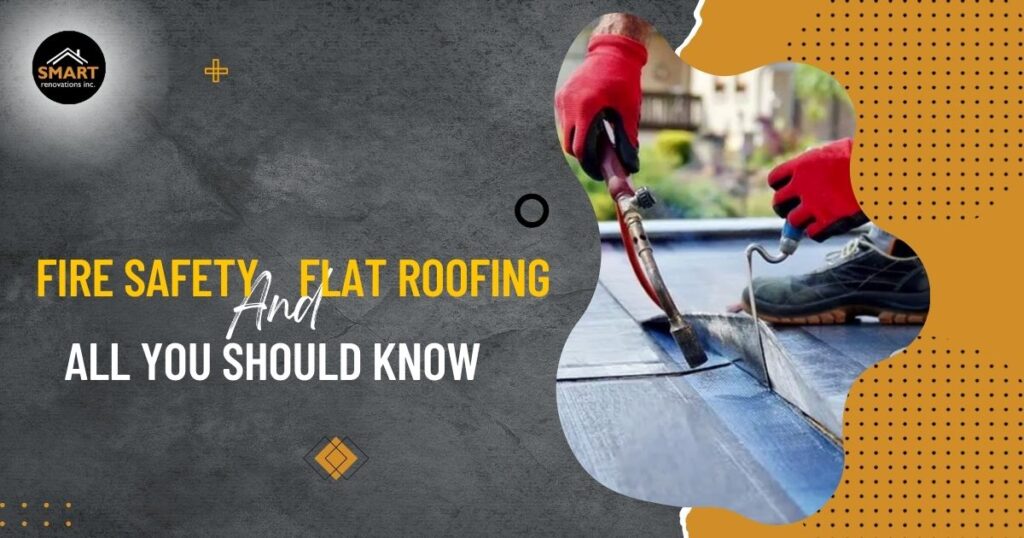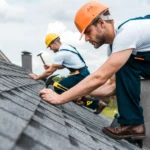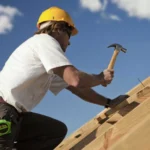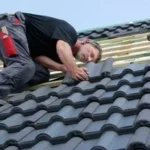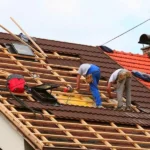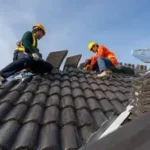When it comes to roofing, particularly flat roofing, one aspect that often gets overlooked is fire safety. Flat roofs are popular in urban environments like New York City, where space is at a premium. However, they come with specific fire safety concerns that homeowners and businesses should be aware of. In this blog, we will explore the relationship between fire safety and flat roofing, including essential information for those considering flat roof repair New York.
Understanding Flat Roofing
Flat roofs are characterized by their minimal slope, typically less than 10 degrees. This design is common in commercial buildings but is increasingly found in residential properties as well. Flat roofs offer several advantages:
- Space Utilization: Flat roofs can serve as additional outdoor spaces for gardens, HVAC units, or even leisure areas. This versatility allows property owners to maximize their usable space.
- Cost-Effectiveness: They are usually easier and cheaper to install than pitched roofs, making them an attractive option for budget-conscious projects.
- Easy Access: Maintenance and inspections can be performed more conveniently, reducing the need for complex scaffolding or ladders.
However, with these benefits come specific challenges, including vulnerability to fire hazards.
Fire Risks Associated with Flat Roofing
Fire safety is crucial, especially in densely populated areas like New York City. Flat roofs can pose unique fire risks due to a combination of factors:
1. Material Flammability
Many flat roofs are constructed from materials that can be flammable. Common materials include:
- Asphalt: Often used in built-up roofing systems, asphalt can ignite under extreme conditions, especially when exposed to prolonged heat.
- EPDM Rubber: While it is fire-resistant, improper installation can lead to vulnerabilities, such as seams that may not be adequately sealed.
- TPO and PVC Membranes: These materials offer some fire resistance but still require careful handling to prevent damage during installation or maintenance.
2. Accumulation of Debris
Flat roofs are prone to accumulating debris such as leaves, branches, and trash, which can catch fire, especially during dry seasons. Regular maintenance is essential to minimize this risk. Ignoring debris can lead to hazardous conditions that increase fire risk significantly.
3. Heat Absorption
Flat roofs tend to absorb more heat than pitched roofs, which can exacerbate fire risks during extreme weather conditions. This heat can weaken roofing materials, making them more susceptible to ignition. Additionally, prolonged exposure to high temperatures can lead to material degradation.
Fire Safety Regulations and Standards
In New York, fire safety regulations for roofing are governed by the New York City Building Code. Understanding these regulations is crucial for homeowners and commercial property managers. Key points include:
1. Class A, B, and C Fire Ratings
Roofing materials are classified based on their fire resistance:
- Class A: High resistance to fire spread and is suitable for most buildings, especially those in high-density urban areas.
- Class B: Moderate resistance; might be acceptable depending on building use and local regulations.
- Class C: Minimal resistance; typically not recommended for flat roofs, particularly in fire-prone areas.
2. Installation Standards
Proper installation is critical for ensuring fire safety. This includes following manufacturer guidelines and local codes. Hiring a qualified roofing contractor, like Smart Renovation Inc, can ensure that your flat roof meets all safety standards and is installed correctly to minimize fire risks.
Importance of Regular Inspections
Regular inspections are vital for maintaining fire safety on flat roofs. Here’s why:
1. Identifying Vulnerabilities
Routine inspections can help identify vulnerabilities such as damaged materials, debris accumulation, and potential ignition sources. Early detection can prevent minor issues from becoming major hazards.
2. Ensuring Compliance
Regular inspections ensure that your roofing system complies with local fire safety regulations, reducing the risk of fines or penalties. Compliance also contributes to the overall safety of your building.
3. Prolonging Roof Life
By catching issues early, you can extend the lifespan of your roof, which can save you money in the long run. A well-maintained roof is less likely to experience significant problems that require costly repairs or replacements.
Flat Roof Repair in New York: What You Need to Know
If you own a flat roof in New York, understanding the repair process is essential for fire safety. Here are key steps involved in flat roof repair:
1. Assessment
Before any repairs, a thorough assessment should be conducted to identify all issues, including fire risks. This assessment should be carried out by a licensed roofing contractor who understands the unique challenges posed by flat roofs.
2. Material Selection
Choosing fire-resistant materials can significantly enhance safety. Always opt for Class A rated materials whenever possible to ensure your roof can withstand potential fire hazards.
3. Professional Installation
Hiring experienced professionals like Smart Renovation Inc ensures that repairs are conducted according to safety standards. Improper installation can lead to vulnerabilities that increase fire risks, so it’s crucial to trust experts.
4. Post-Repair Inspections
After repairs, conduct a follow-up inspection to ensure that the work meets all fire safety regulations. This step is essential to confirm that any potential fire hazards have been addressed.
Fire Prevention Tips for Flat Roofs
In addition to regular inspections and repairs, homeowners can take proactive measures to enhance fire safety on flat roofs:
1. Clear Debris Regularly
Regularly remove all debris from the roof to reduce fire risks. This includes clearing leaves, branches, and any waste that could ignite. Establishing a routine cleaning schedule can be very effective.
2. Install Fire-Resistant Barriers
Consider adding fire-resistant barriers or coatings to your flat roof to enhance its fire resistance. These barriers can help slow the spread of fire and protect the underlying structure.
3. Maintain Nearby Vegetation
If you have trees or shrubs near your building, ensure they are well-trimmed to prevent branches from falling on the roof and potentially starting a fire. Keeping vegetation trimmed back can reduce the risk of fire spreading to the roof.
4. Monitor for Leaks
Water leaks can weaken roofing materials and create areas where fire can spread more easily. Address any leaks promptly to maintain the integrity of your roofing system.
Conclusion
Fire safety is a critical concern for flat roofing, especially in a bustling urban environment like New York City. Understanding the fire risks associated with flat roofs and taking proactive measures can significantly enhance safety. Regular inspections, proper material selection, and professional repairs are essential steps in ensuring that your flat roof remains safe and compliant.
If you are considering flat roof repair in New York, trust Smart Renovation Inc to provide expert services that prioritize your safety. With our knowledge and experience, we ensure that your roofing needs are met with the utmost care and professionalism.
By being informed about fire safety and flat roofing, you can protect your investment while ensuring the safety of your property and its occupants. Don’t hesitate to reach out to Smart Renovation Inc for all your roofing needs!
Check our google store: Smart Renovation Inc

